Best Things to Do in Perugia
Are you ready to discover the beautiful city of Perugia in Italy? This place is like a treasure chest—it’s full of history, great food, and fun things to see and do.
Are you ready to discover the beautiful city of Perugia in Italy? This place is like a treasure chest—it’s full of history, great food, and fun things to see and do.
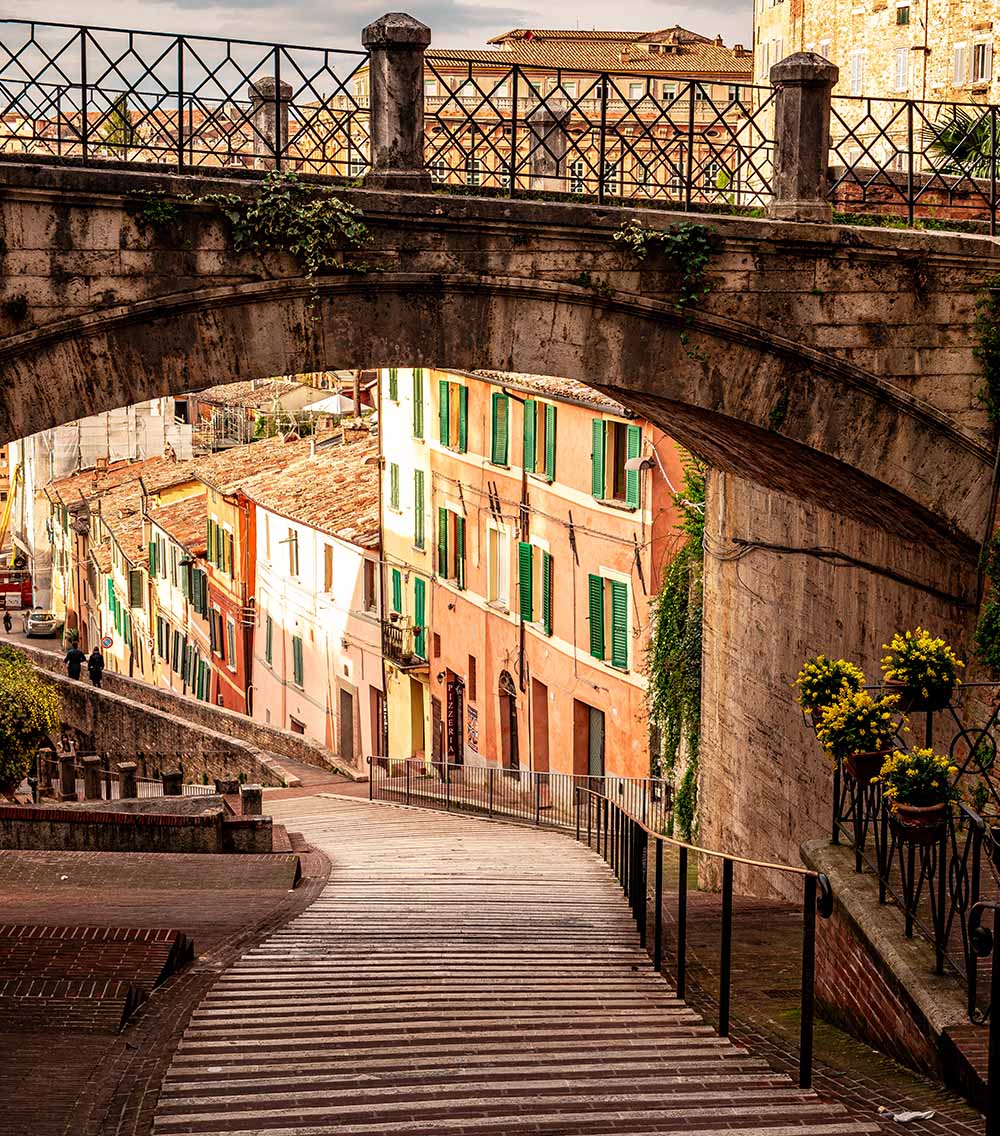
Walk through historic neighborhoods, find hidden passageways, and admire the stunning architecture of cathedrals. Exploring all the things to do in Perugia offers a fascinating journey through ancient streets, medieval architecture, and rich cultural heritage. In this Perugia travel guide, we will show you the best thing to do in Perugia.
There are several ways to get to Perugia depending on your preferences and budget.
Perugia has its own airport, Sant’Egidio Airport (PEG), which receives daily flights from Milan. However, this airport has limited connections. A more likely scenario is that you’ll fly into a larger airport nearby, such as:
Lastly, the Giuliano Foschi Train Stations is the main hub that connects Perugia to other important cities in Italy including Rome, Florence, and Milan. Generally, I find it efficient and comfortable to travel by train in Italy, and it is also common to get cheap fares if you book beforehand.
Perugia is easily accessible by automobile from around Italy. Perugia lies off the north-south A1 road in central Italy. Driving allows one to explore Umbria at one’s own pace, which is ideal. However, check that certain city center areas may have parking spaces.

The best way to experience Tuscany is to rent your own car! We recommend booking well in advance using price comparison sites like rental cars if traveling in the peak summer season.
The city also has metered “blue stripe” parking areas within the historic center ZTL zone that are accessible to all users from 1pm to 6am on weekdays and 24 hours on holidays. If you need to know more about parking in Italy check our ultimate guide for driving in Italy.
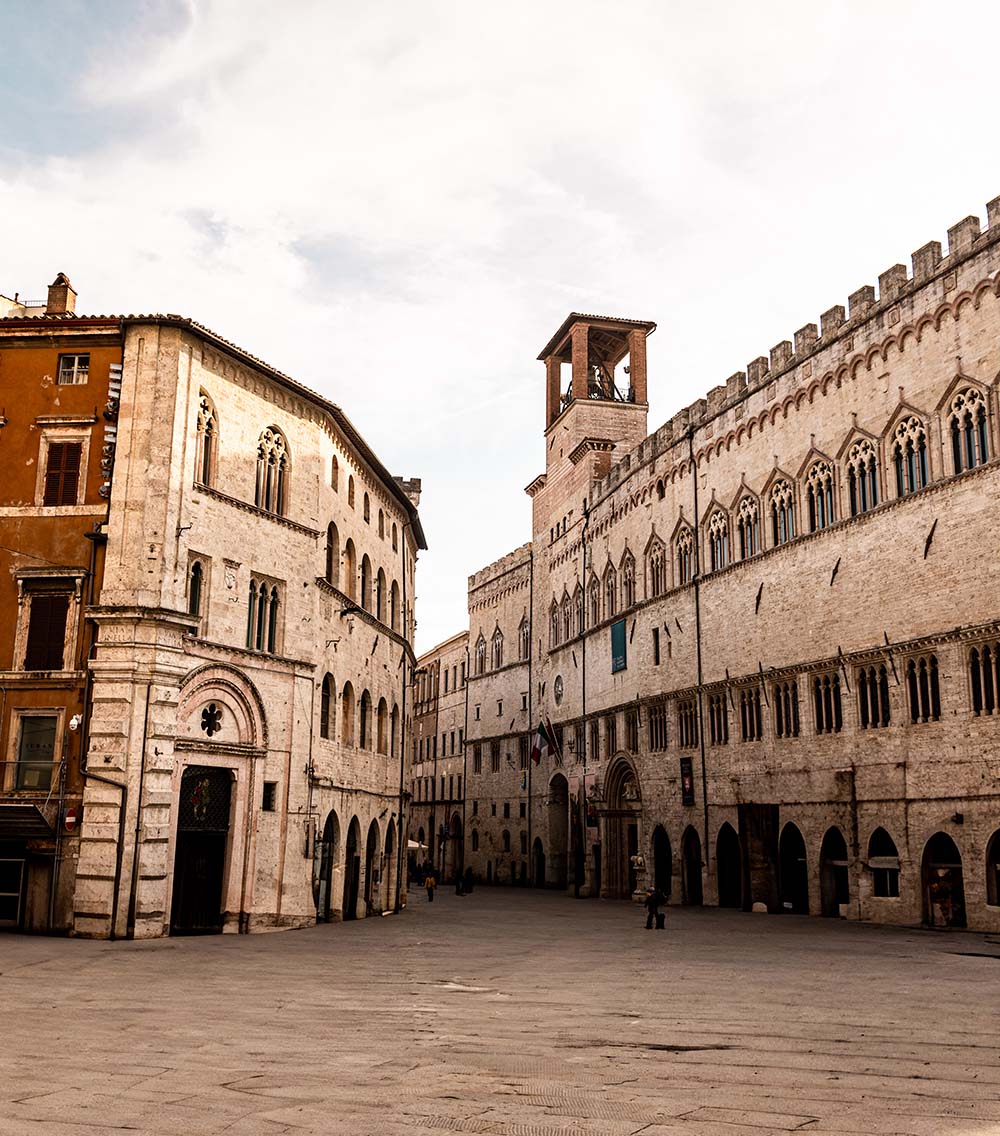
This grand palace is a notable Perugia attraction located in the heart of Perugia’s main square, Piazza IV Novembre. Built in the 13th century, it was the seat of the city’s government for centuries. Today, it houses the National Gallery of Umbria, which has a collection of paintings, sculptures, and decorative arts from the Middle Ages to the 19th century.
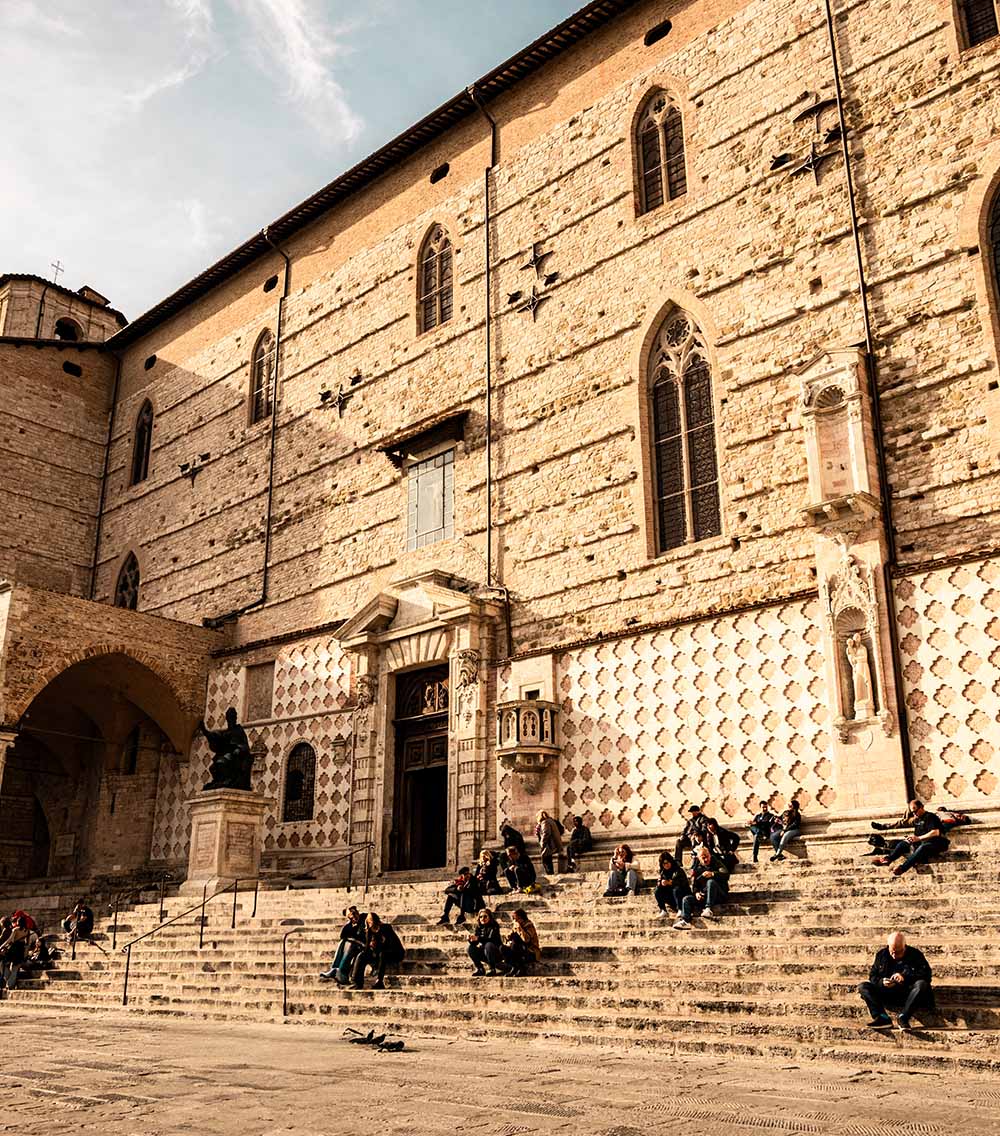
Also located in Piazza IV Novembre, this beautiful Gothic cathedral is dedicated to Saint Lawrence. Construction began in the 12th century and was not completed until the 15th century. The facade is made of white and pink marble, and the interior is decorated with frescoes and sculptures. The cathedral also houses the tomb of Pope Benedict XI.
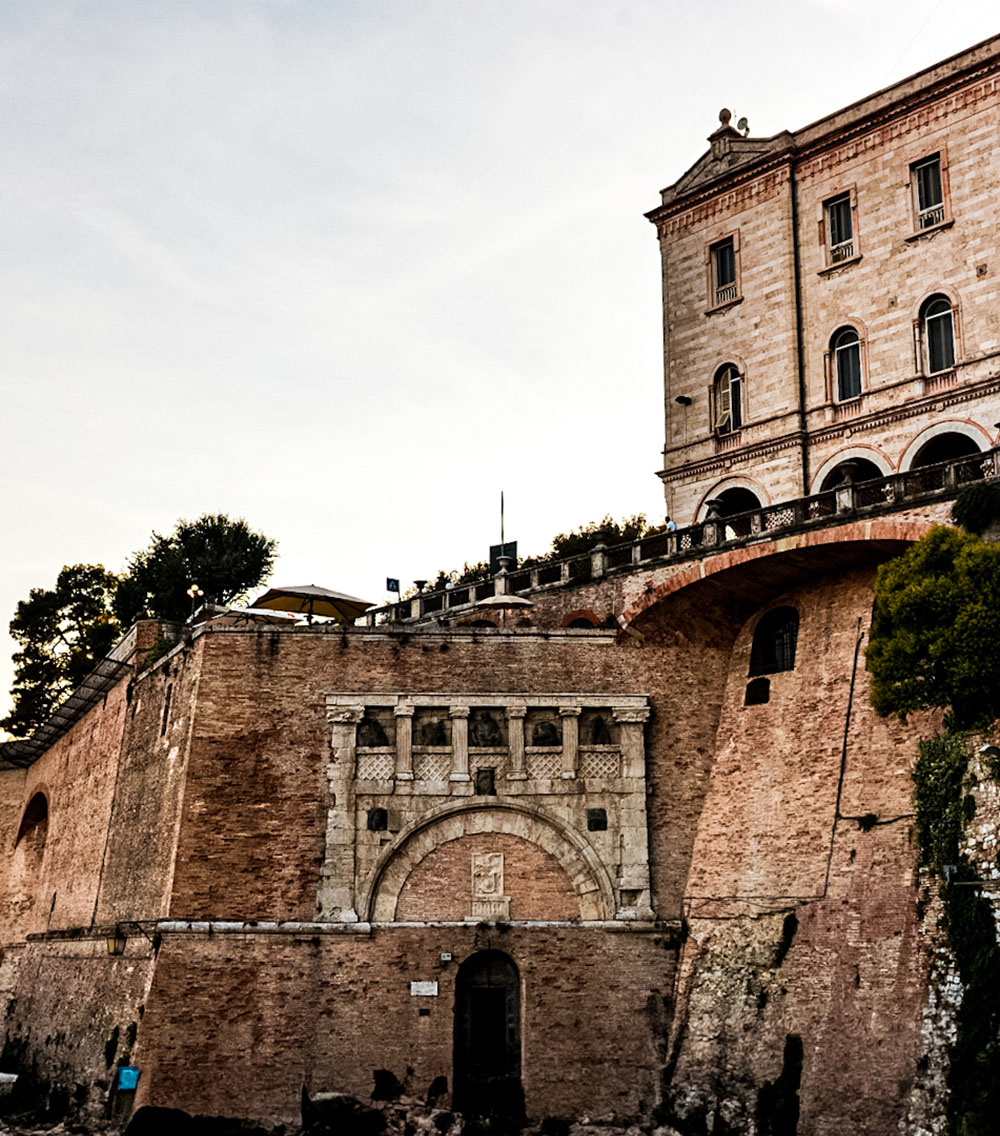
Farnese Palace is a large castle that was constructed in the mid-16th century by Papal Predecessor Pope Paul III. Originally, it was situated on the site of the earlier Etruscan and Roman city walls and as such brought about a dramatic alteration in what was perceived as the city’s topography. Presently, the Rocca Paolina is among the ideal locations for strolling and consuming picnics since it includes a great view of the city of Perugia and its surroundings.
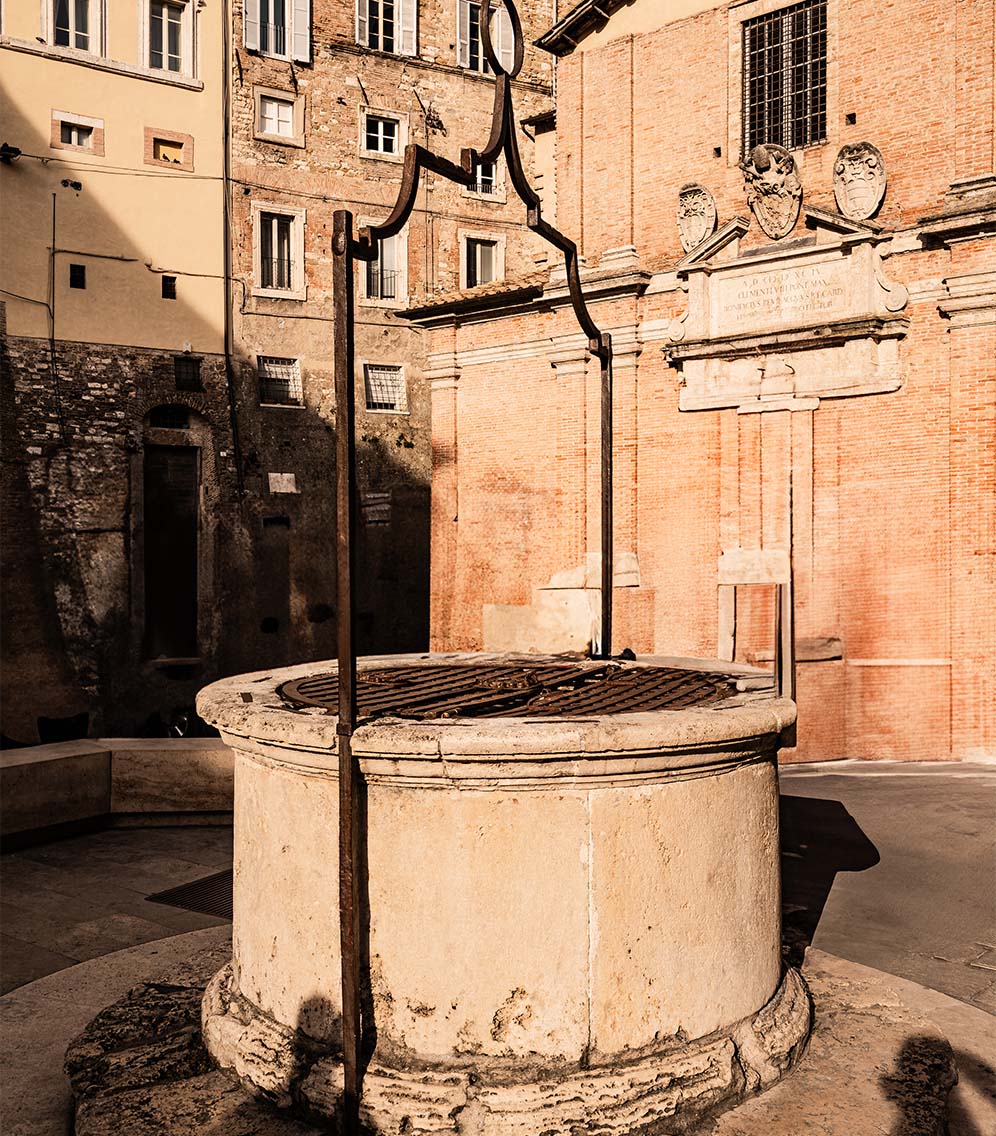
The Etruscan Well (Pozzo Etrusco) in Perugia, Italy is an impressive archaeological site dating back to the 6th century BC. The well, over 36 meters deep, was constructed using large stone blocks and was an important water source for the ancient Etruscan city. While there, you can descend into the well via a spiral staircase and view the impressive engineering feat. The site provides a fascinating glimpse into the advanced hydraulic systems developed by the Etruscans and is a must-see if you are interested in ancient history and archaeology.

Piazza IV Novembre is worth visiting in Perugia and having fun there is a must for every guest of the city. This lovely place is surrounded by cafes, restaurants, and shops as well. It is better for sitting and watching the people passing by, socializing, and even having a cup of gelato or coffee.


This atmospheric path follows the ancient Roman aqueduct that once supplied water to Perugia. Imagine the city bustling centuries ago as you stroll beneath towering arches, enjoying the cooling shade and panoramic glimpses of the Umbrian countryside. Keep an eye out for hidden courtyards and secret gardens tucked away along the route.
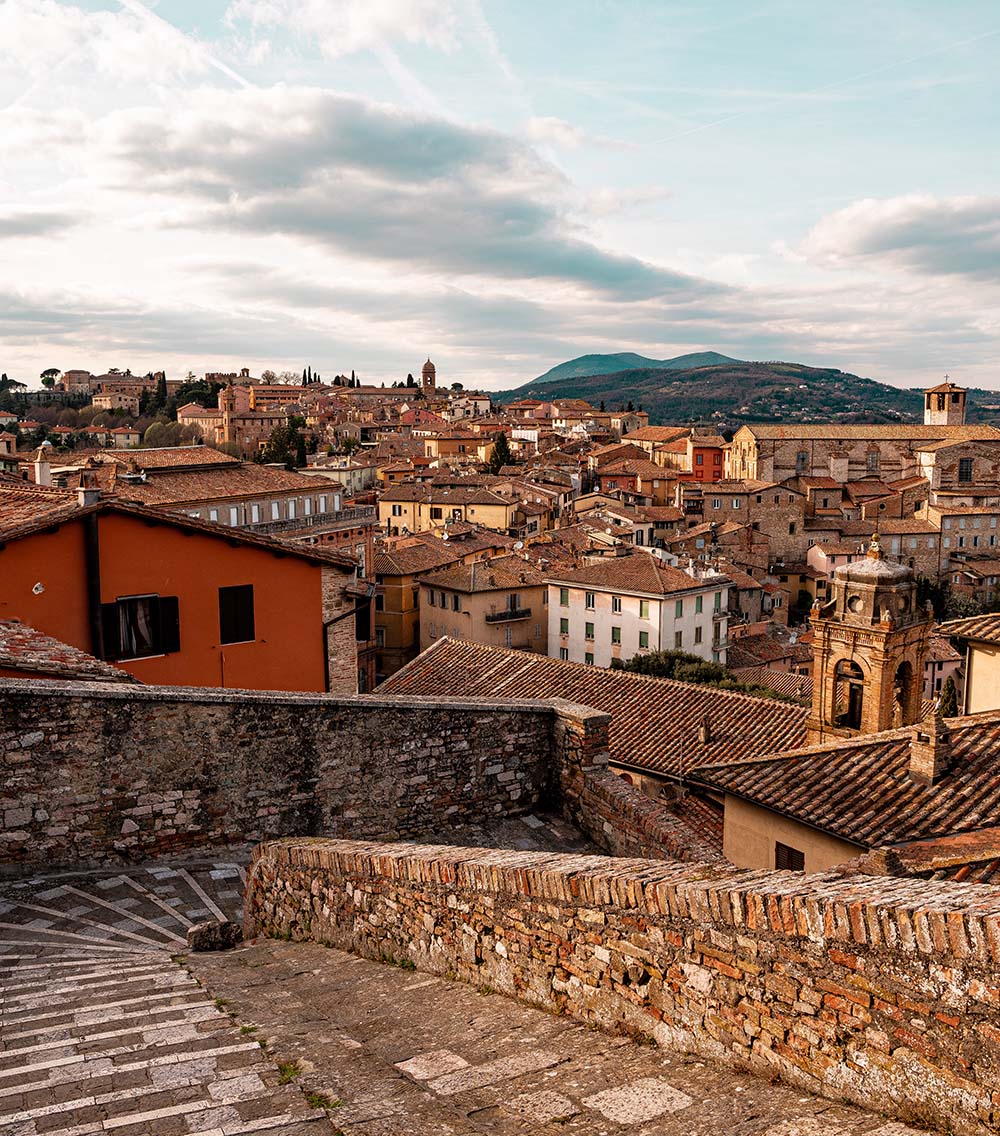
Head to Porta Sole, a monumental 14th-century gate, for breathtaking vistas. Climb the city walls and soak in the sprawling panorama. See terracotta rooftops cascading down the hillside, olive groves blanketing the valley floor, and on a clear day, catch a glimpse of shimmering Lake Trasimeno. This spot is especially magical at sunset, bathed in the warm glow of the golden hour.

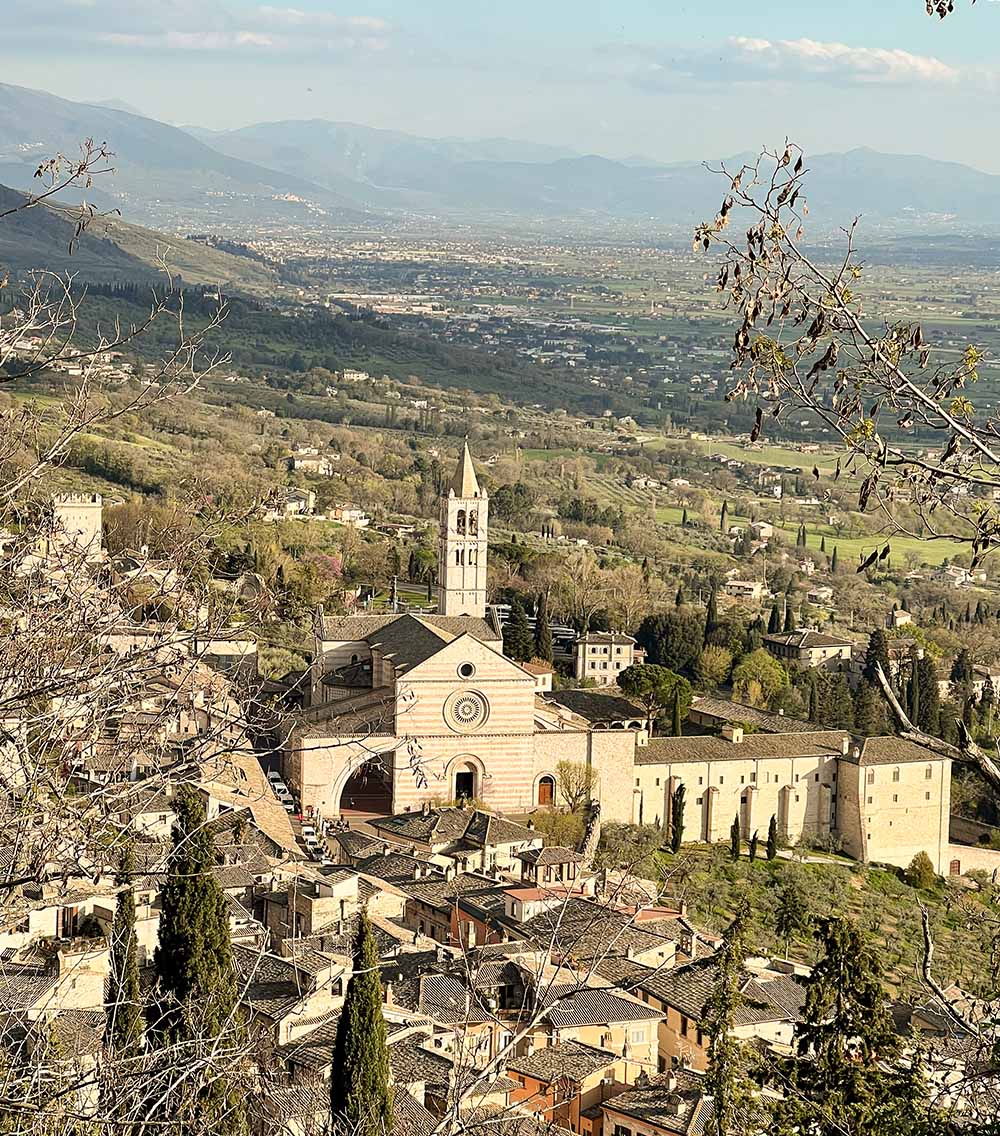
A short trip from Perugia lies the enchanting town of Assisi. Birthplace of St. Francis, Assisi is a pilgrimage site steeped in history and spirituality. Explore the magnificent Basilica of San Francesco, adorned with Giotto’s awe-inspiring frescoes. Wander through charming medieval streets, soak in the peaceful atmosphere, and delve into the life of this beloved saint.
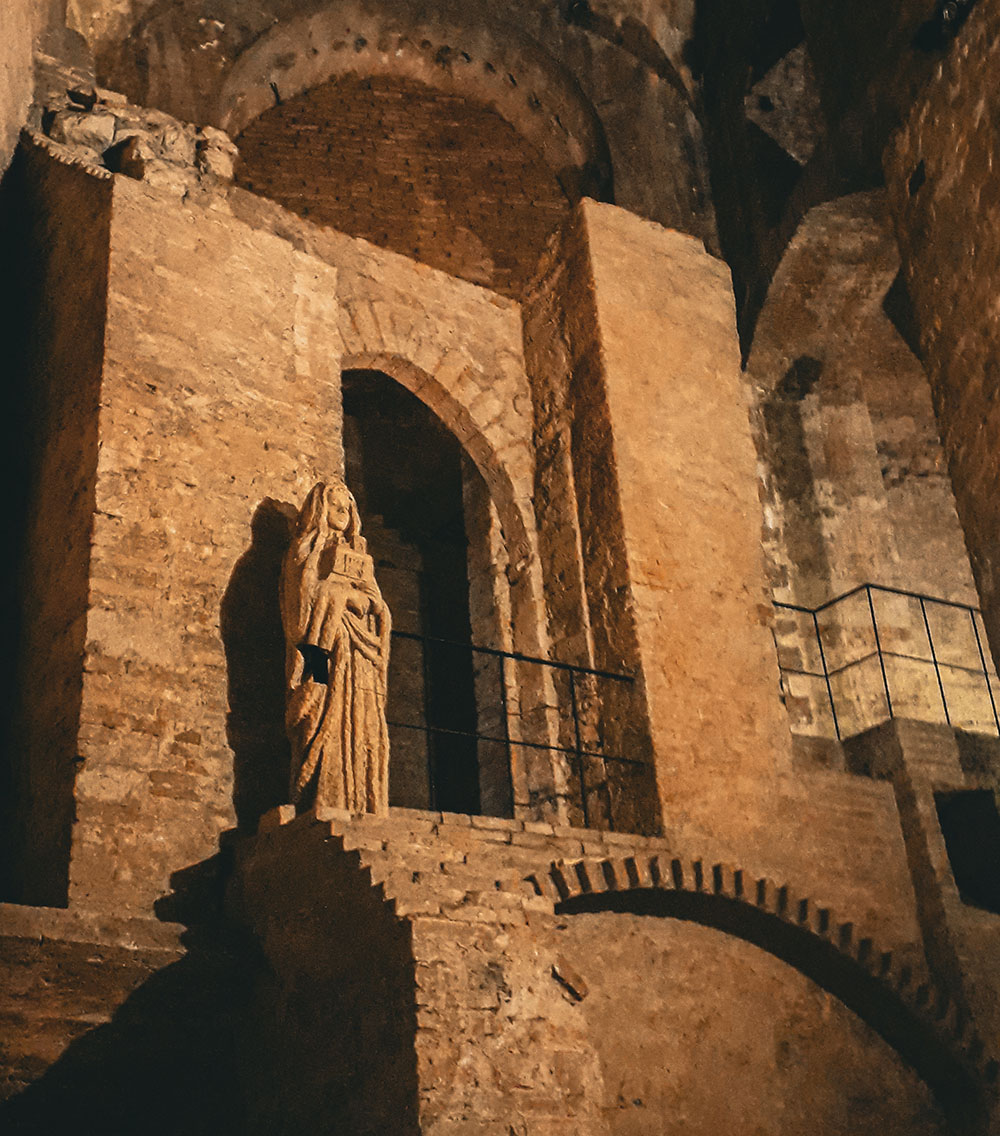
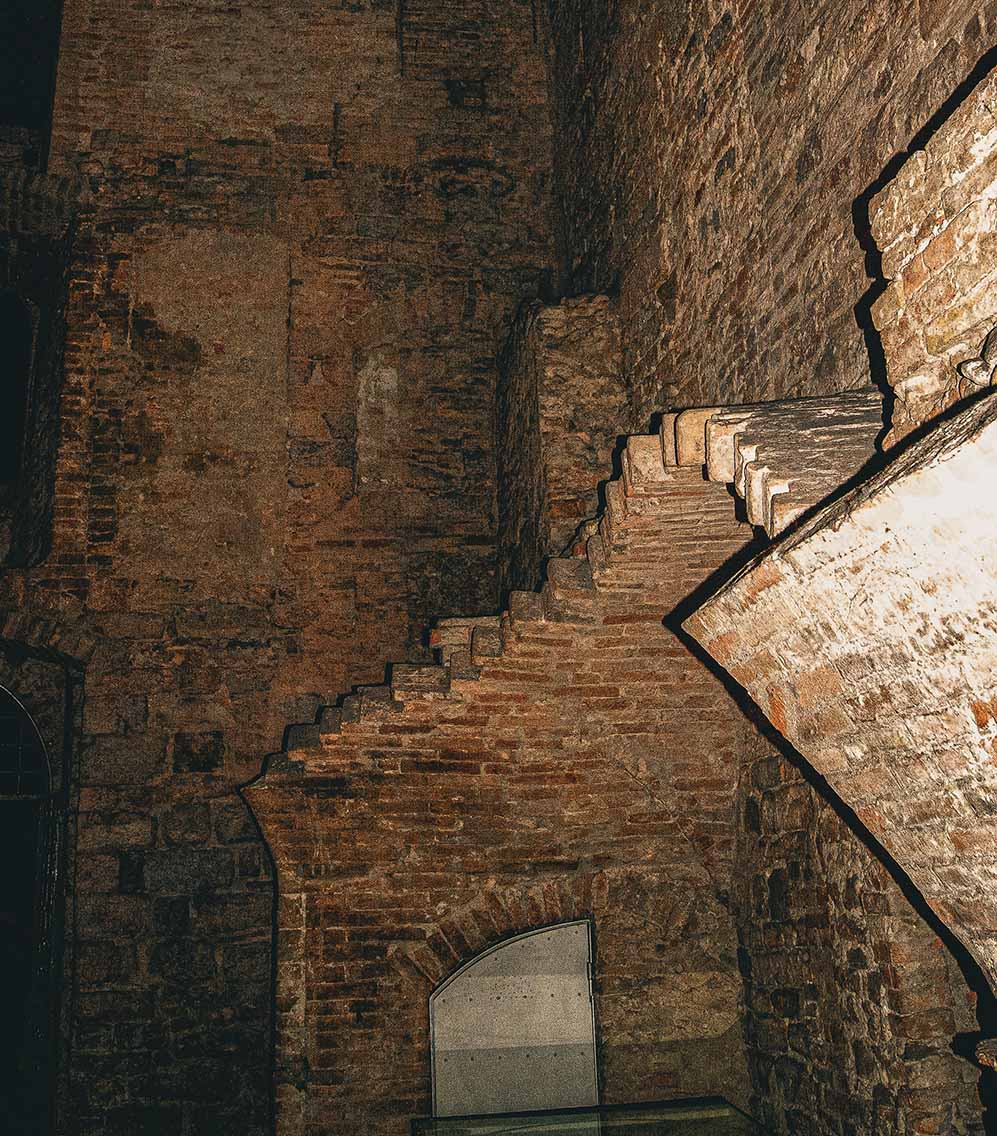
Embark on a subterranean adventure in Perugia Underground. Descend beneath the city and explore a network of Etruscan tunnels, wells, and chambers. Learn about the city’s fascinating past as you navigate these hidden passageways, used for centuries for water storage, defense, and even religious rituals. This unique tour offers a glimpse into Perugia’s hidden depths.
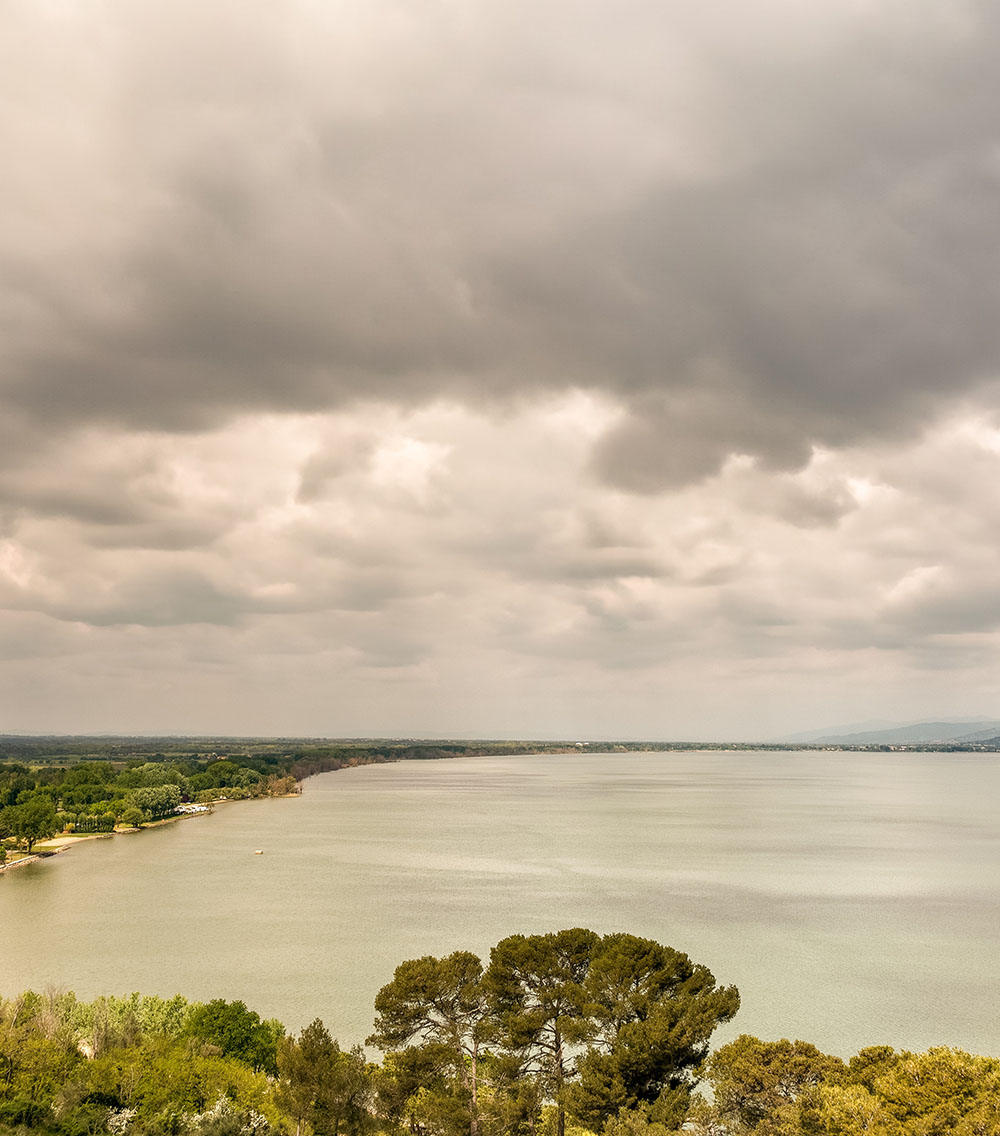
Escape the city bustle and unwind at idyllic Lake Trasimeno, Italy’s fourth-largest lake. Take a boat tour, admiring the picturesque lakeside villages. Rent a bike and explore the surrounding countryside. Sample fresh fish at a lakeside restaurant, savoring the local flavors while gazing across the sparkling water. Whether you seek active adventures or serene relaxation, Lake Trasimeno offers a perfect escape.
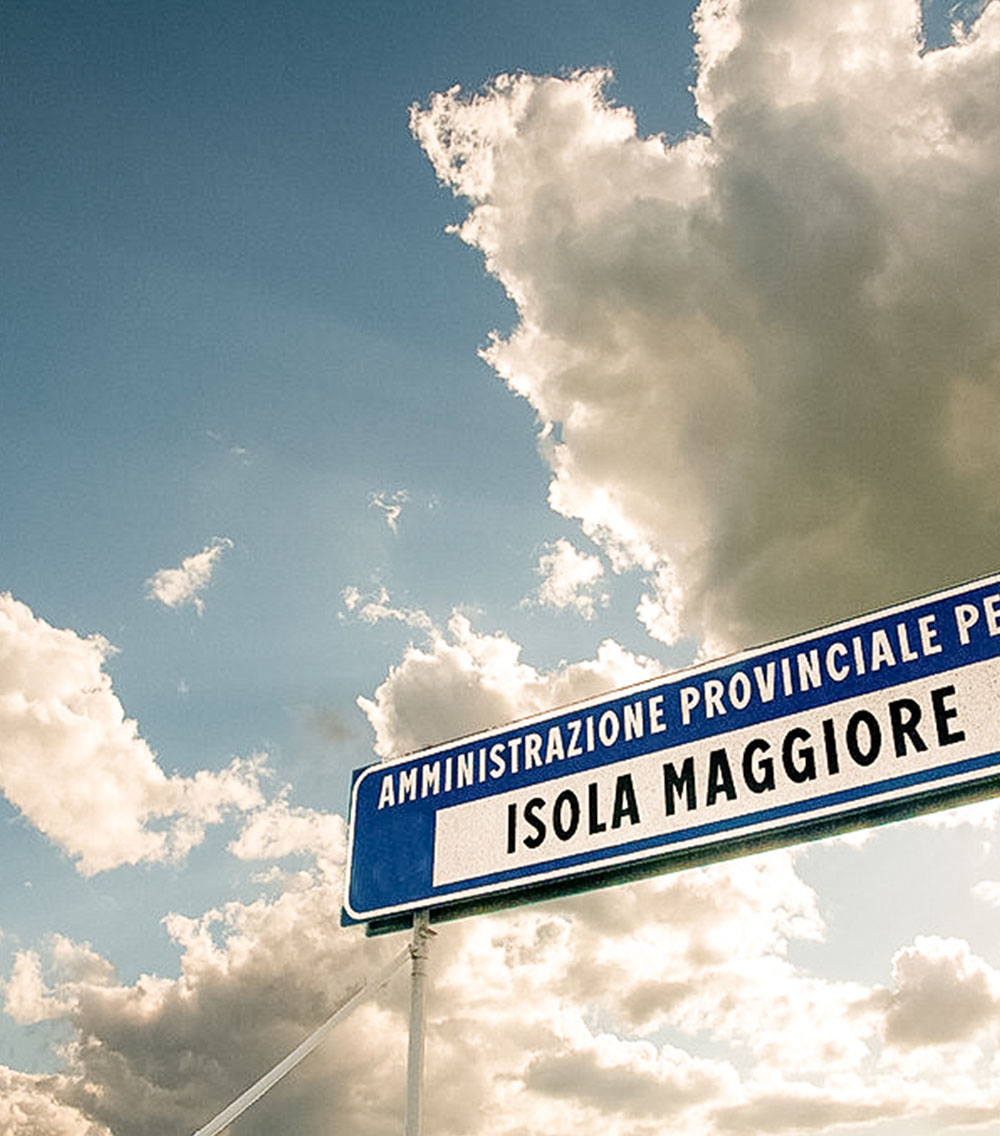
Escape the city center and explore Isola Maggiore, the largest island on Lake Trasimeno. This car-free island boasts a charming fishing village, medieval lanes, and stunning lake views. Explore the 12th-century Castello Guglielmi fortress, wander through olive groves, or simply relax on the pebble beach. Ferries depart regularly from nearby towns, making it a delightful day trip from Perugia.
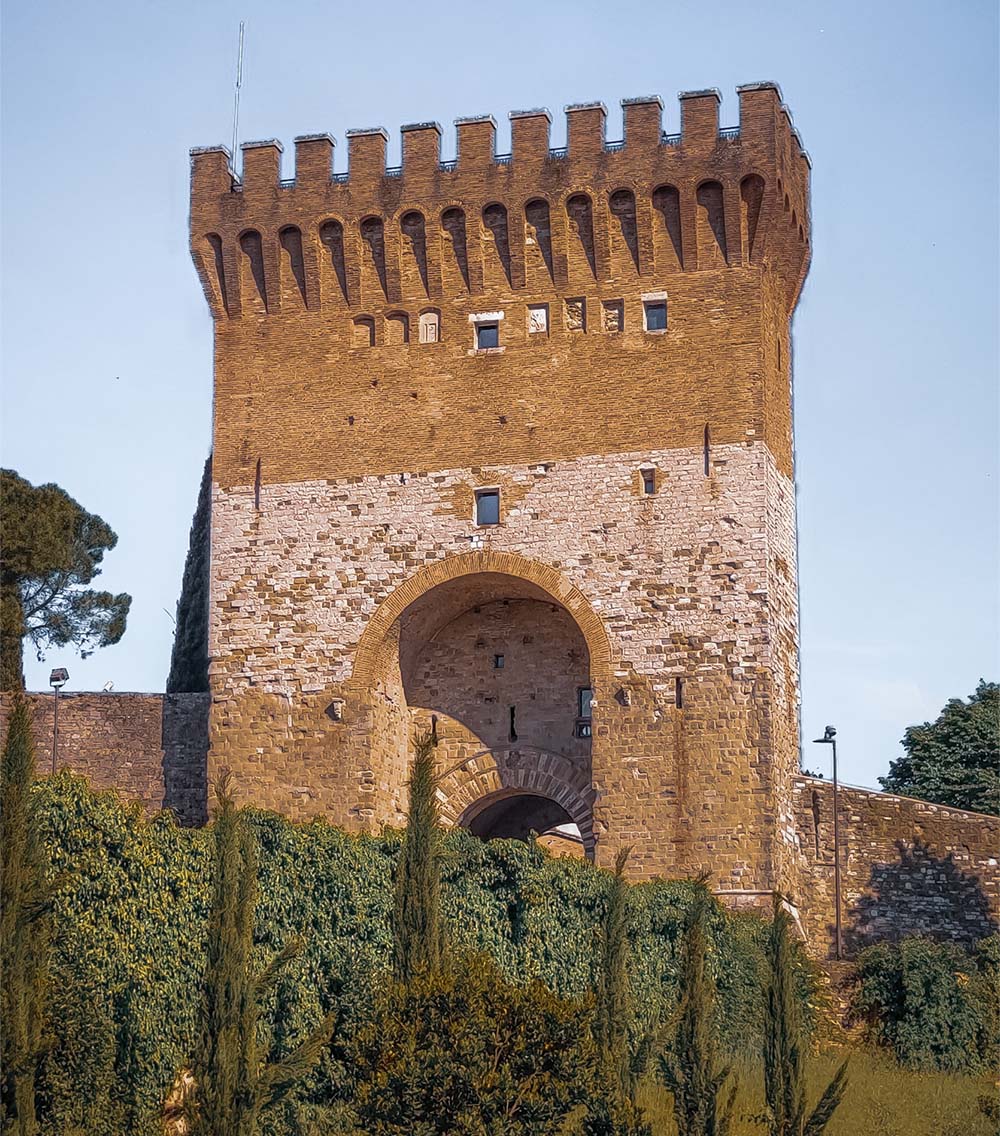
Step back in time at the imposing Saint Angelo Gate (Porta Sant’Angelo). This fortified entrance, dating back to the 13th century, was once a vital part of Perugia’s defensive walls. Admire the impressive stonework and the coat of arms above the archway. Take in the panoramic views of the surrounding countryside from the top of the gate, offering a unique perspective of the city below.
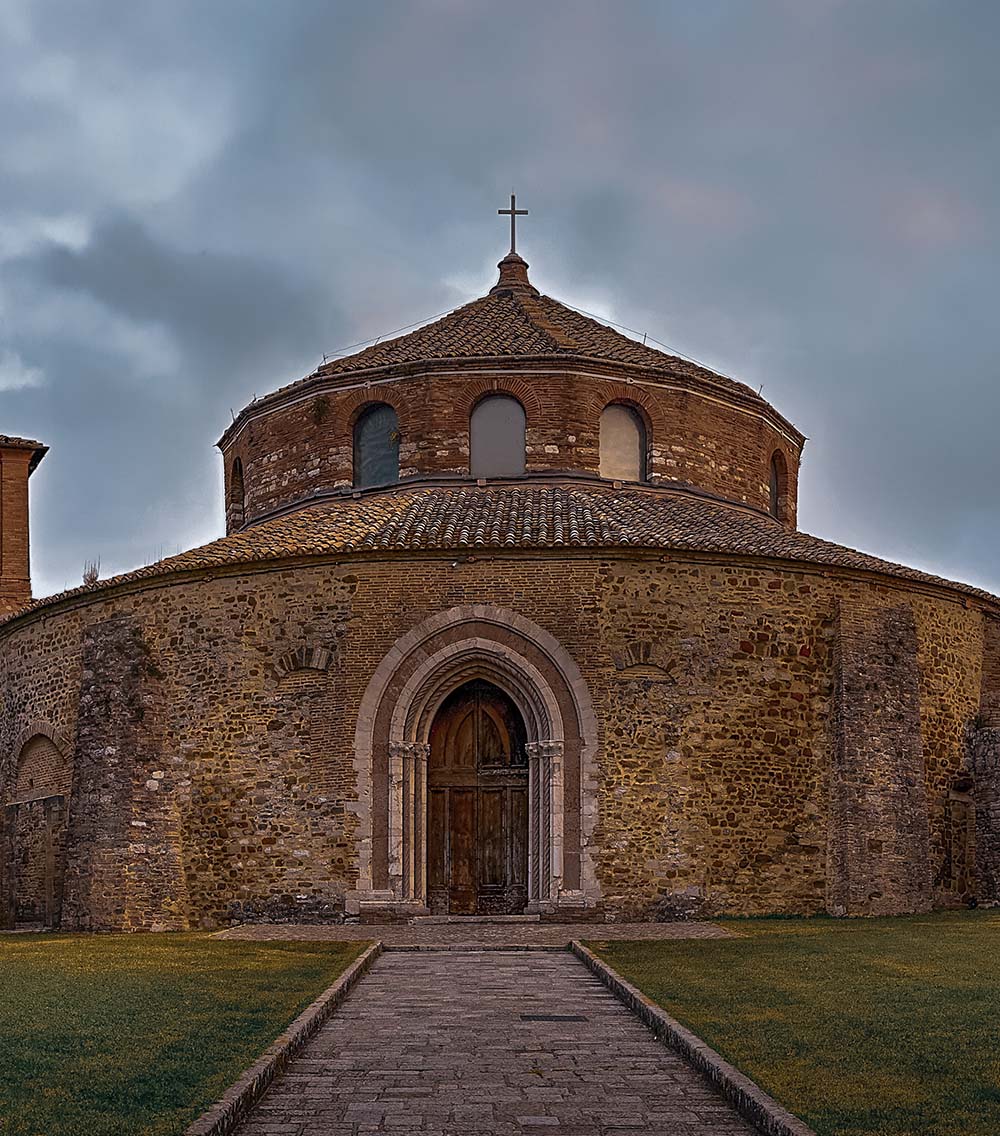
Uncover a hidden gem tucked away in a quiet corner of Perugia. The Chiesa di San Michele Arcangelo, a Romanesque church dating back to the 10th century, boasts a fascinating history. Explore the simple yet elegant interior, adorned with frescoes depicting scenes from the life of Saint Michael. This peaceful church provides a welcome respite from the bustling city streets.
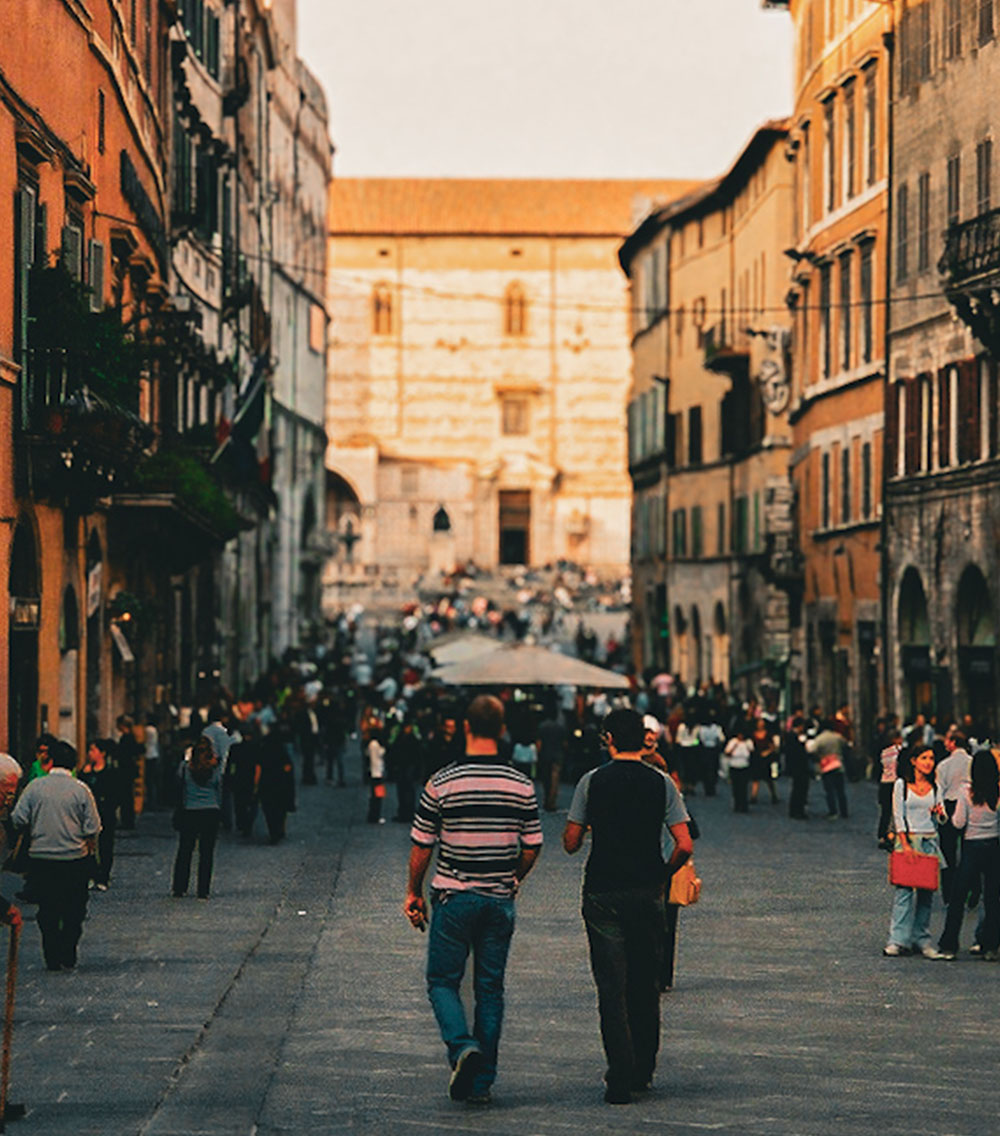
Immerse yourself in the vibrant heart of Perugia with a stroll down Corso Pietro Vannucci, the city’s main artery. This pedestrianized street is lined with elegant shops, bustling cafes, and historical buildings. Window shop for local crafts, indulge in gelato on a sunny afternoon or people-watch as you soak up the atmosphere. Corso Pietro Vannucci is the perfect place to experience the energy and charm of Perugia.
Discover a hidden artistic treasure trove on Via della Viola. This narrow street, known for its flower stalls, is also home to a unique open-air art gallery. Admire a collection of contemporary sculptures and murals displayed on the walls of the buildings. This unexpected showcase of creativity adds a touch of modern flair to the historic city center.

Perugia’s true magic lies beyond the main attractions. Venture into the labyrinthine backstreets and discover a hidden world of tucked-away piazzas, charming cafes frequented by locals, and artisan workshops showcasing traditional crafts. Get lost in the maze-like alleyways, stumble upon unexpected viewpoints, and experience the authentic atmosphere of this Umbrian city.
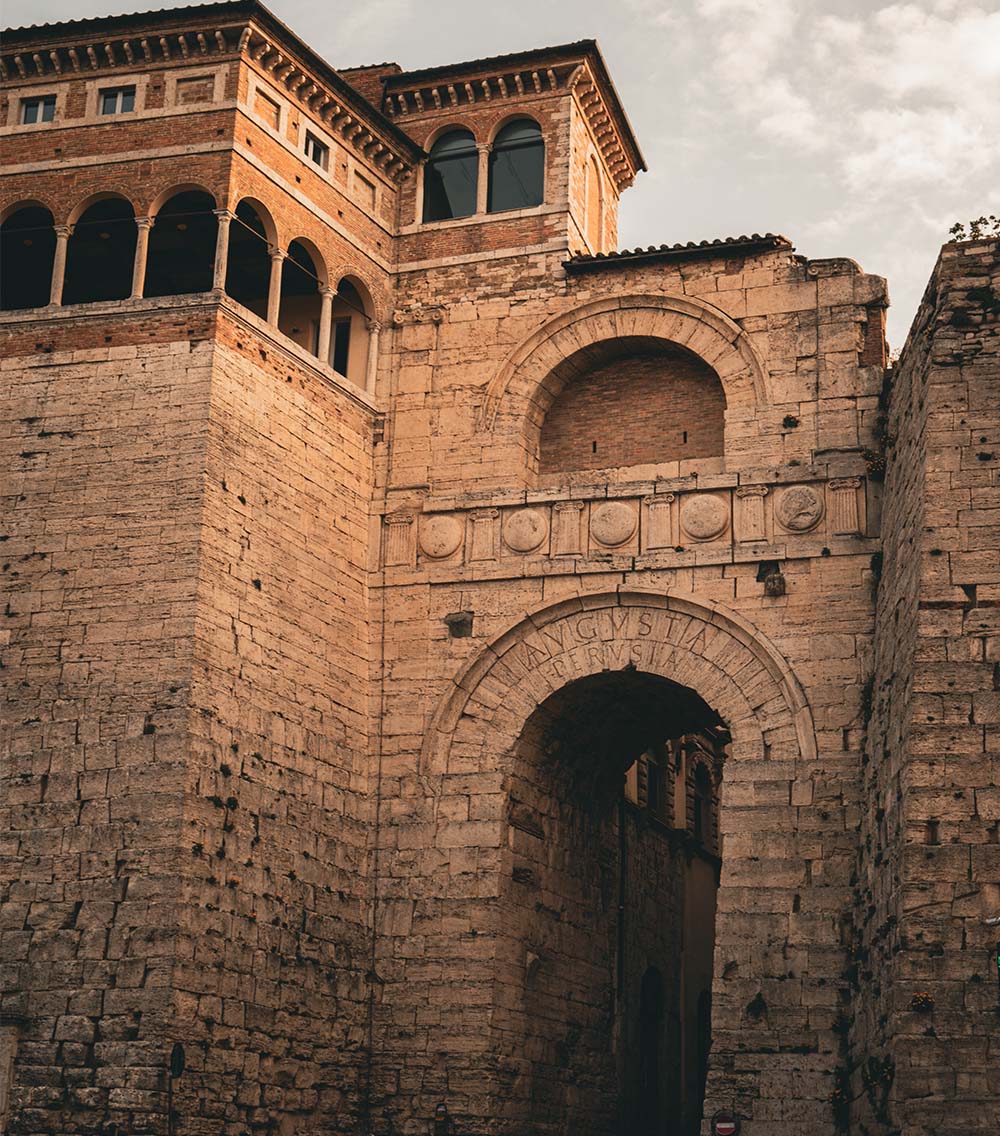
Spend time in the early history of Perugia at Arco Etrusco popularly known as Arco di Augusto which was built about 2000 BC. Constructed at the earliest in the 3rd century BC, this elaborate archway is one of the last examples of Etruscan architecture in the city. Stroll across the archaic acropolis admire the preserved stony structure and visualize the old Etruscan culture in existence.
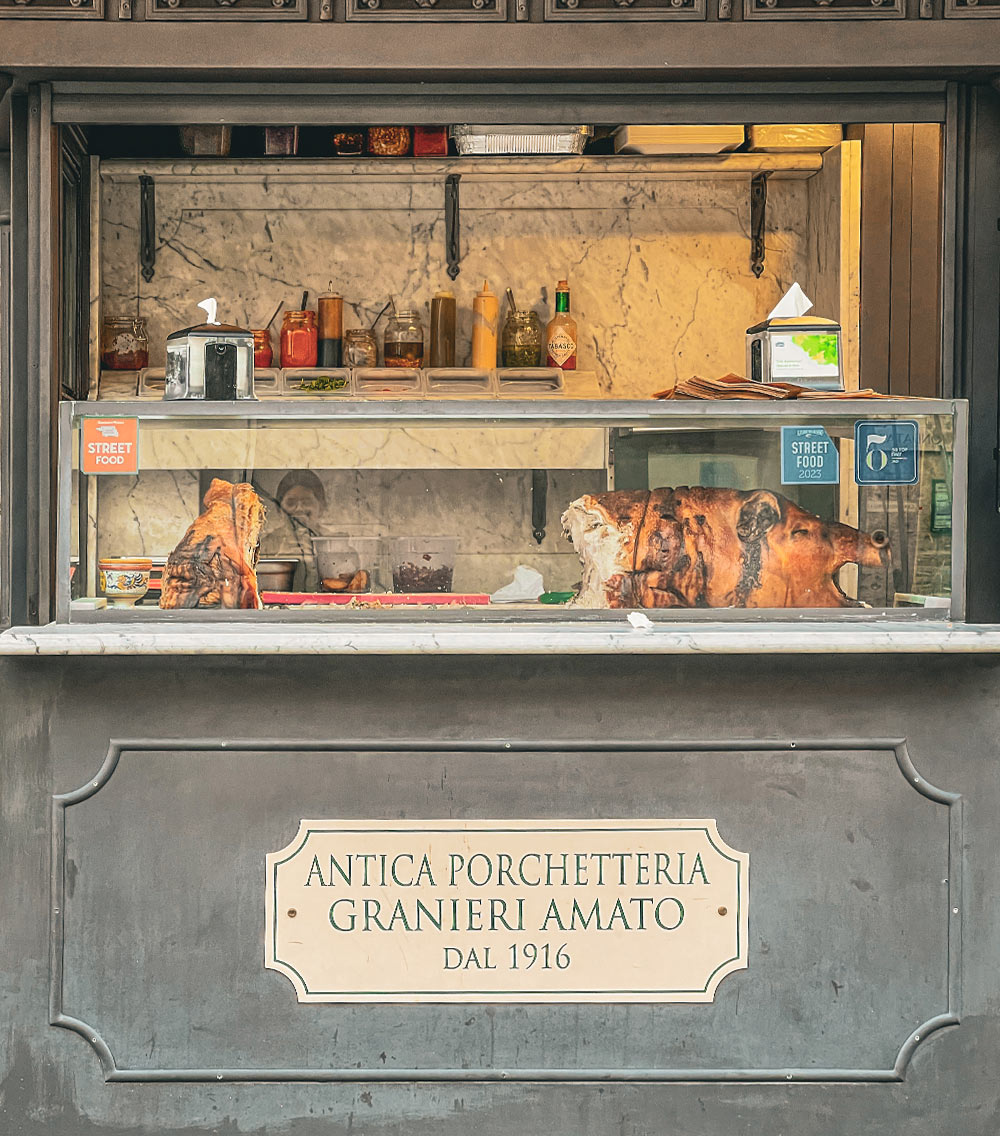
No trip to Perugia is complete without indulging in the regional specialty – porchetta. This succulent slow-roasted pork dish is bursting with flavor and a must-try for any food lover. Sample it from a street vendor for a quick bite, or order a generous portion at a local restaurant. Be sure to pair it with a glass of Umbrian wine for a truly satisfying experience.

Visit an old fortress, Rocca Paolina – Depending on the route, step into the fortress and after a few moments, find yourself in a different world of business. They are now covered with apparel and food markets, so one can purchase everything that is produced locally. Stroll past stands packed with crispy vegetables, locally made cheeses and hams, crafted indigenous trinkets, and flowers intensify the local flavor. Try to get a feel of the lively tone you will be met with the moment you step into Perugia and create memories that you will take with you at the end of the trip.
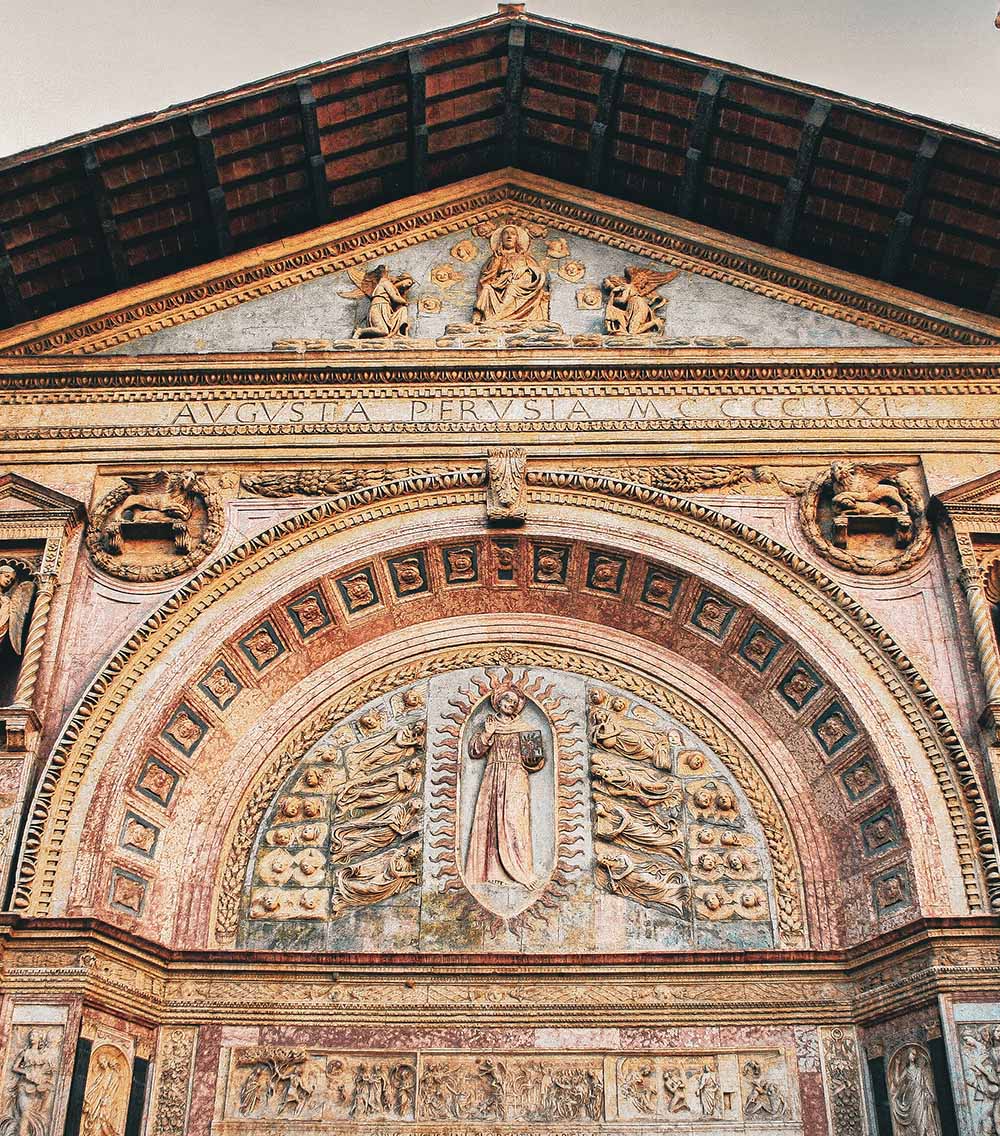
Travel to the Oratory of San Bernardino and learn all about one of the most brilliant examples of the Renaissance. This tiny chapel was constructed during the 15th century and is also one of the masterpieces as it contains frescoes by the prominent artist Perugino. We were amazed as we looked at the best frescoes that are bright in color and portray scenes in the life of St Bernardino of Siena. This convene is one of the significant artifacts that depict the beautiful artistic view of Perugia and is a good visit for tourists.
Explore a magnificent example of Gothic architecture with a visit to the Basilica di San Domenico and San Pietro. This imposing church, built in the 14th century, features a beautiful facade adorned with intricate sculptures and rose windows. Step inside to discover a spacious interior housing impressive artwork, including frescoes by renowned painters like Perugino. The basilica is also the final resting place of the famed composer Pietro Aretino, adding to its historical significance.
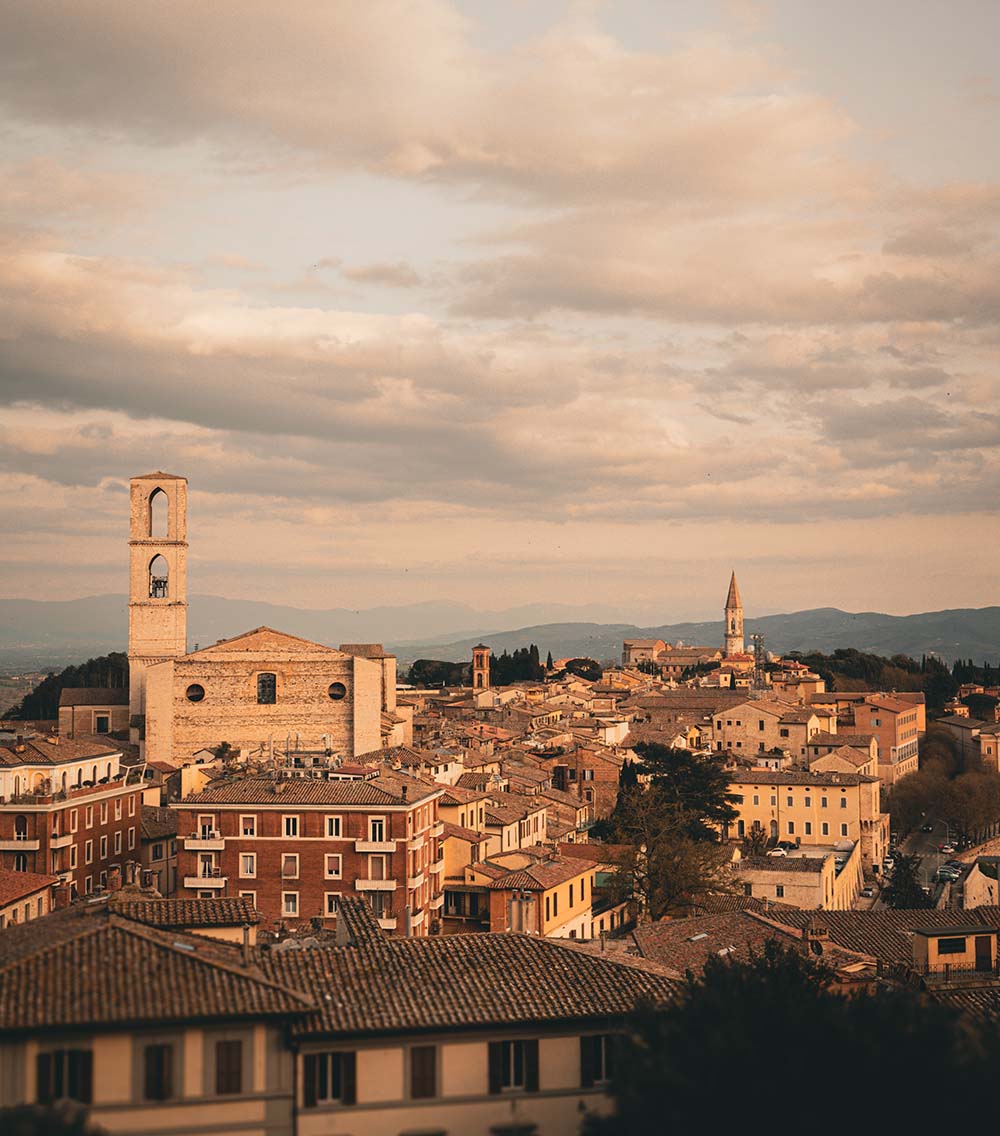
Perugia offers breathtaking panoramic views, and Giardini Carducci provides the perfect spot to witness a magical sunset. These public gardens, located on a hilltop overlooking the city, offer a peaceful escape from the urban buzz. As the sun dips below the horizon, the sky explodes with vibrant colors, casting a golden glow over the city and the surrounding Umbrian landscape. Enjoy the breathtaking scenery and unwind after a day of exploration.
Perugia is also famous for wine making and in Umbria, wine is treasured and perhaps no better place is this more evident than in the city. Take a tour of one of the neighboring wine producers to find out more about the wines that the area is famous for. Visit wine regions, find out how wine was produced back in the day, and of course sample local wines. Most of the wineries have striking views of the countryside and charming villages, thus making it even more spectacular.
Perugia transforms into a vibrant hub of activity after dark. Stroll along the illuminated Corso Vannucci, the city’s main artery, and soak in the lively atmosphere. Duck into a cozy enoteca (wine bar) for a selection of regional wines and delicious appetizers. Catch a live music performance at a local bar, or enjoy a rooftop dinner with breathtaking city views. Perugia’s nightlife caters to diverse preferences, offering something for everyone to enjoy.


Taking a day trip to Assisi is a great way to experience two of Umbria’s most charming towns. Assisi, the birthplace of Saint Francis, is a beautiful and spiritual town. Be sure to visit the Basilica of San Francesco, with its stunning frescoes by Giotto.
Spello is famous for its Infiorata flower festival, where the streets are adorned with breathtaking floral carpets every year on the weekend of Corpus Domini. Even outside the festival, Spello’s historic center with its Roman walls and beautiful churches is a delight to explore.
The chef gives modern takes on traditional Umbrian dishes that set a new fine dining standard. Their seafood paella and other recipes incorporate fresh, local, and seasonal food items, and the food is served with a good selection of wines. We must note that this place falls into the category of rather expensive, but the ambiance and the quality of food compensate for it.
This more intimate and quite romantic little restaurant specializes in Umbrian cuisine and the brick vaulted ceiling gives this place a rather country feel. It caters to savory meals, especially for meats and seafood, and the pasta is made from scratch. The price range is quite reasonable and it is more of an ‘open-air’ restaurant, perfect for grabbing a bite in the evening.
Dating back to the early twenties this food joint still provides typical Umbrian food in a nostalgic setting. They have some kind of a terrace or some open-air seating arrangements; You may wish to dine out. A Summary of Their Eatery Their food offerings are great because they prepare traditional meals using fresh foods sourced locally. Expect moderate prices.
This is a highly utilitarian platform that has a range of services for eating from breakfast to cocktails. The restaurant offers a variety of meals, for instance, pizzas, pasta, salads, and a variety of meat products. They also serve various types of wines and beers, although their stock is not as diverse as the liquor variety. On the location factor, the atmosphere can be described as relaxed with some moderate prices being charged.
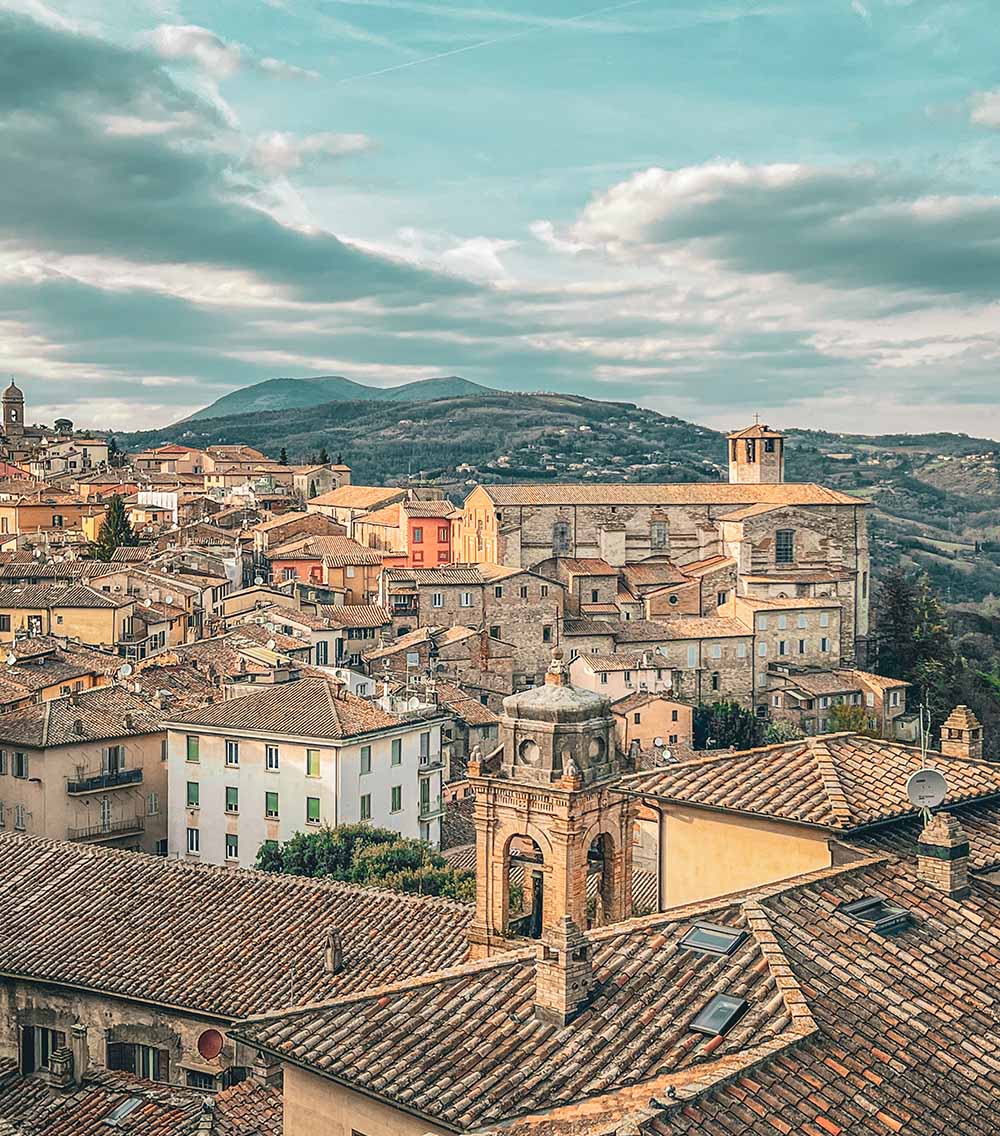
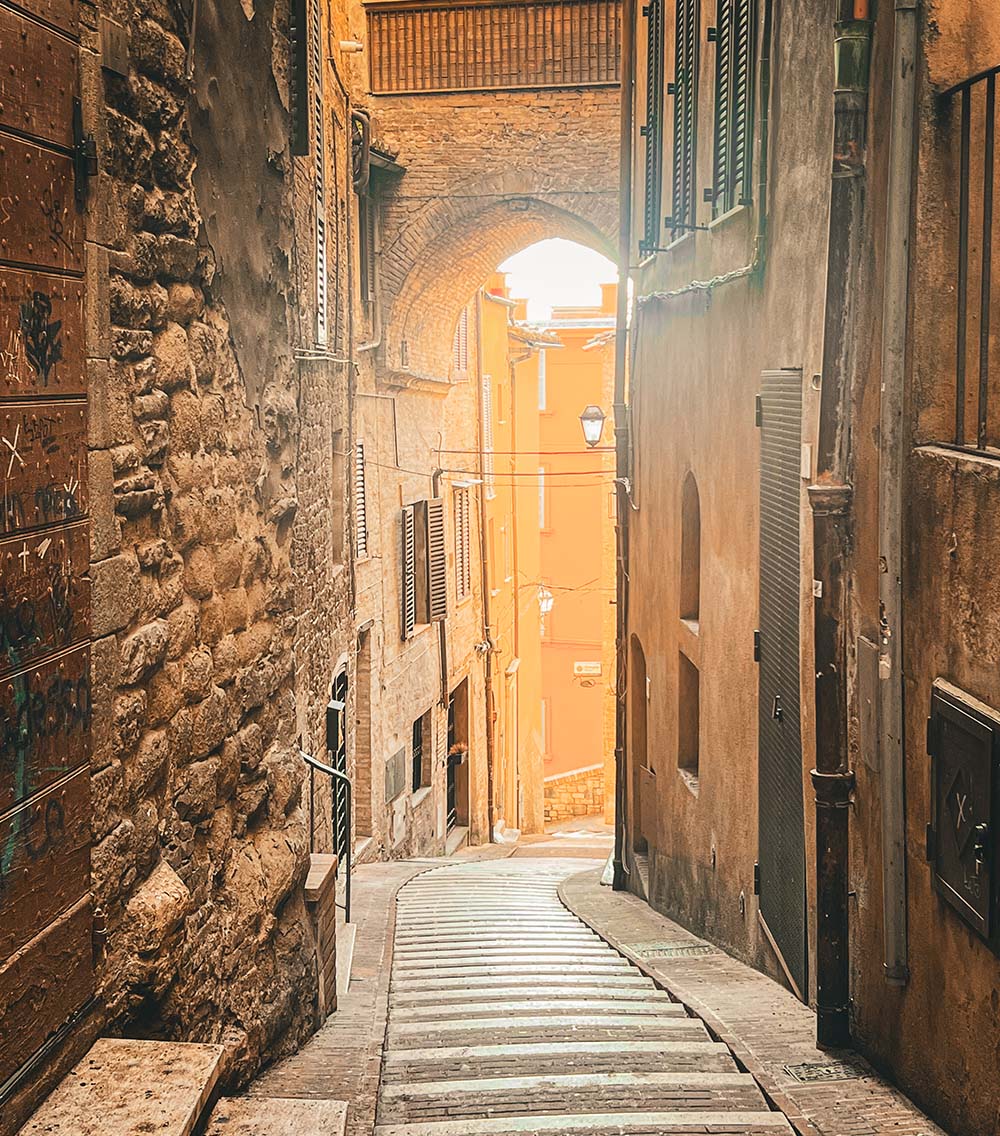
Perugia has many excellent hotels for historic hotel lovers and more upscale guests. Sina Brufani or Castello di Monterone provides luxurious, historical stays. Small hotels like Locanda della Posta or Relais San Clemente are good for the city center. Primavera Mini Hotel and Hotel Morlacchi are great options for budget travelers. Perugia offers agritourism, where you can stay at a farm. After a cultural and gourmet tour of Italy, Perugia has a spot to rest your head.
The best time to visit Perugia depends on what you’re looking for in your trip. Here’s a breakdown of the pros and cons of different times to visit:
Spring (April-June)
This is what can be considered an off-season in Perugia as it is neither very hot nor cold, tourist congestion is mid-range, and everything is cheaper than in mid-summer. This is also the best time to visit if you consider outdoors, and do not wish to see massive tours of people around.
Summer (July-August)
Perugia has its summer in July and it is characterized by high temperatures and sunny weather, which is good for most outdoor events and festivals. It can be quite lively in the city due to several activities that are available at this time though the prices will have slightly shot up with lots of people around. Bear in mind that July also marks the Umbria Jazz Festival – one of the most popular ones with musical fans.
Autumn (September-October)
The weather starts to cool down in autumn, making it a comfortable time to explore the city. The crowds start to thin out, and you can find good deals on hotels and flights. There are also several harvest festivals held in Umbria during this time, celebrating the season’s bounty.
Winter (November-March)
Winter is the quietest time to visit Perugia, with the fewest crowds and the lowest prices. However, some shops and restaurants may be closed during this time, and the weather can be cold and rainy. There’s also a chance of snow, especially in the higher elevations.
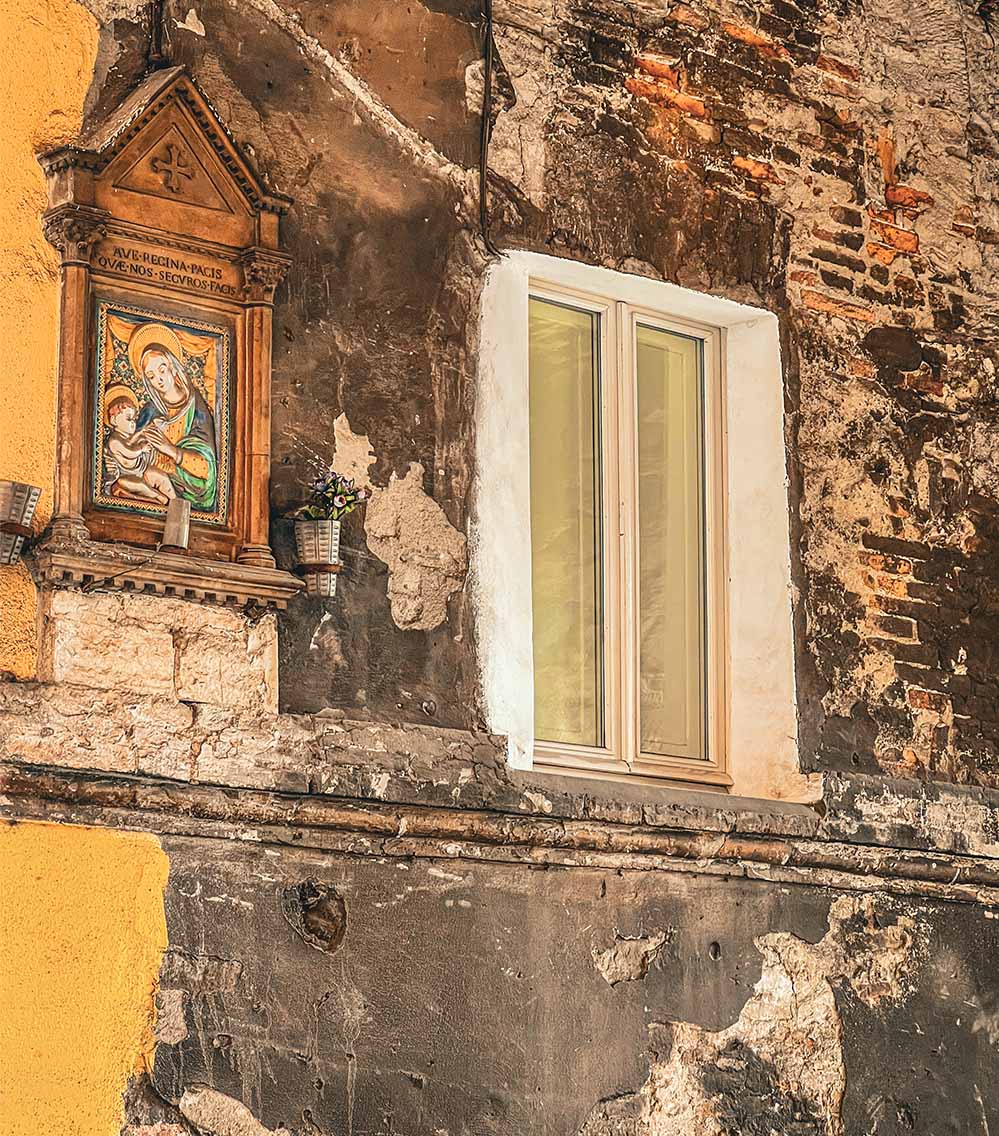
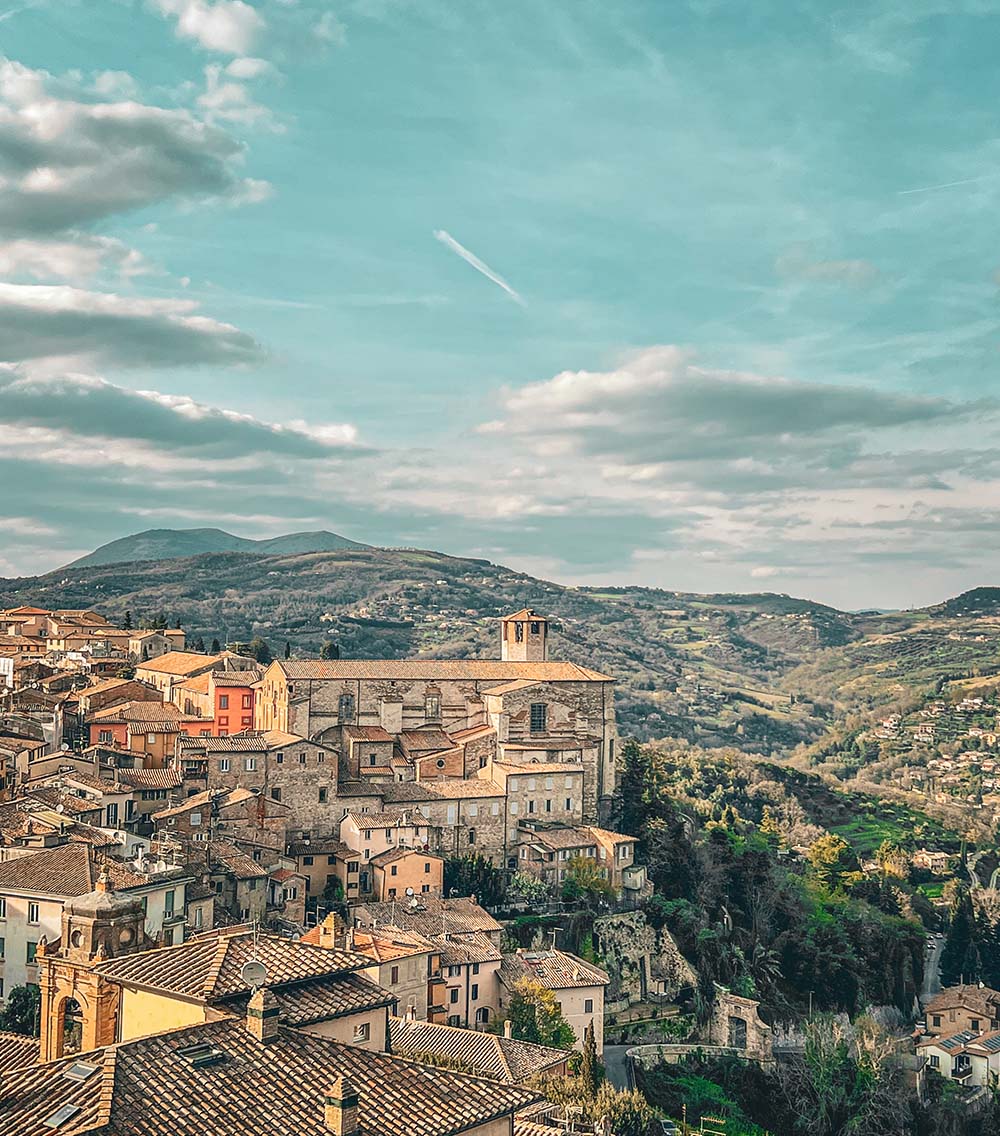
Absolutely! Perugia offers a rich tapestry of history (Etruscan!), delicious food (think truffles!), charming streets, and even family-friendly activities (puppet museums!). Many free things to do in Perugia also increase its worth.
Perugia is best known for two delicious things: decadent chocolate (especially Baci chocolates) and Umbrian cuisine (including truffles!). It also boasts a rich Etruscan history and a stunning hilltop location.
Start your Perugia day with a guided walking tour to get oriented and learn about the city’s history. Next, explore the National Gallery of Umbria, which houses a collection of Umbrian art from the Middle Ages to the Renaissance. In the afternoon, reward yourself with a delicious Umbrian lunch featuring local specialties like truffles and handmade pasta. End your day with a stroll through the city’s charming streets and hidden piazzas, soaking up the atmosphere.
It depends on your vibe! Perugia is a lively city with a younger crowd, while Assisi is a serene town steeped in religious history. Choose Perugia for a vibrant life or Assisi for peaceful charm. For a blend of both, consider a Perugia day trip, allowing you to experience the city’s energy and then retreat to Assisi’s tranquility.
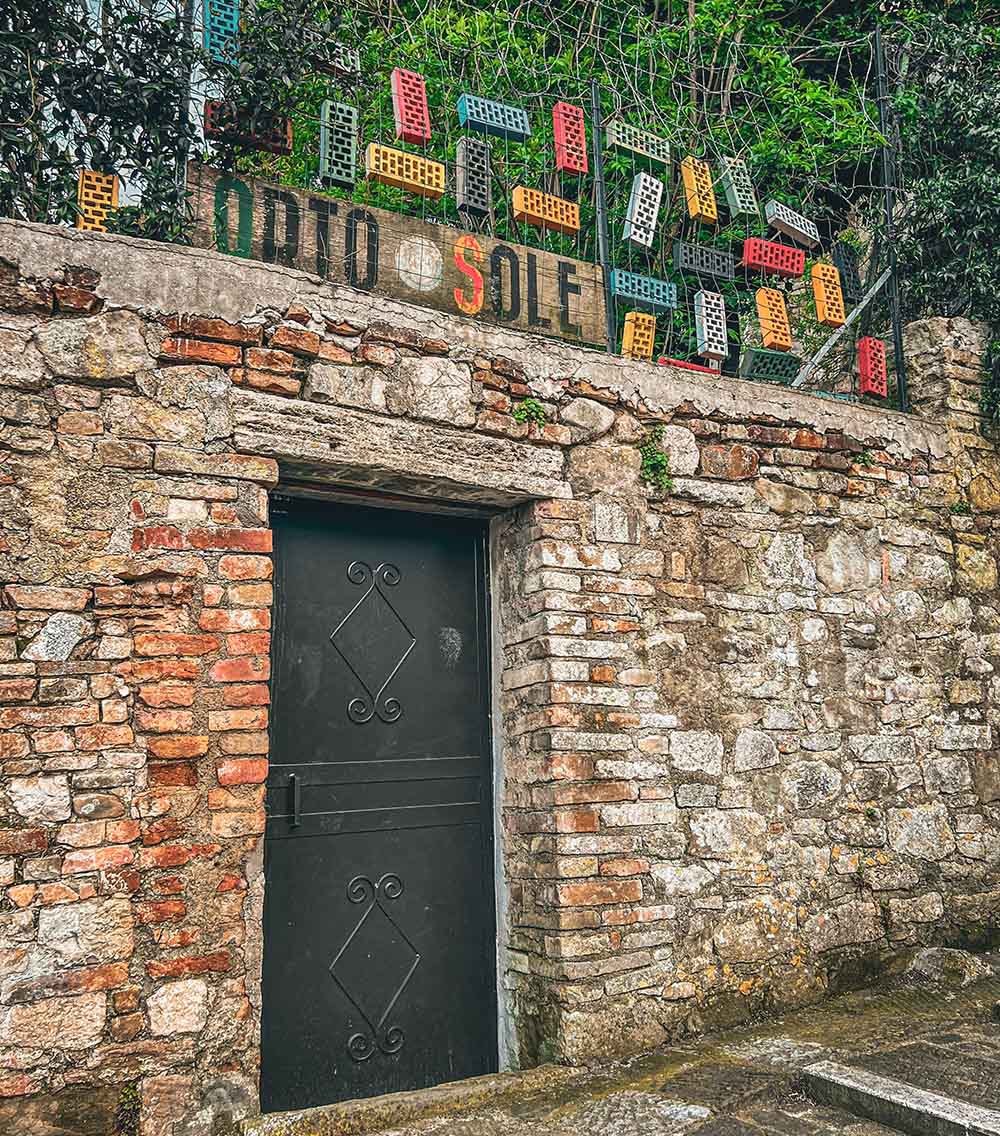
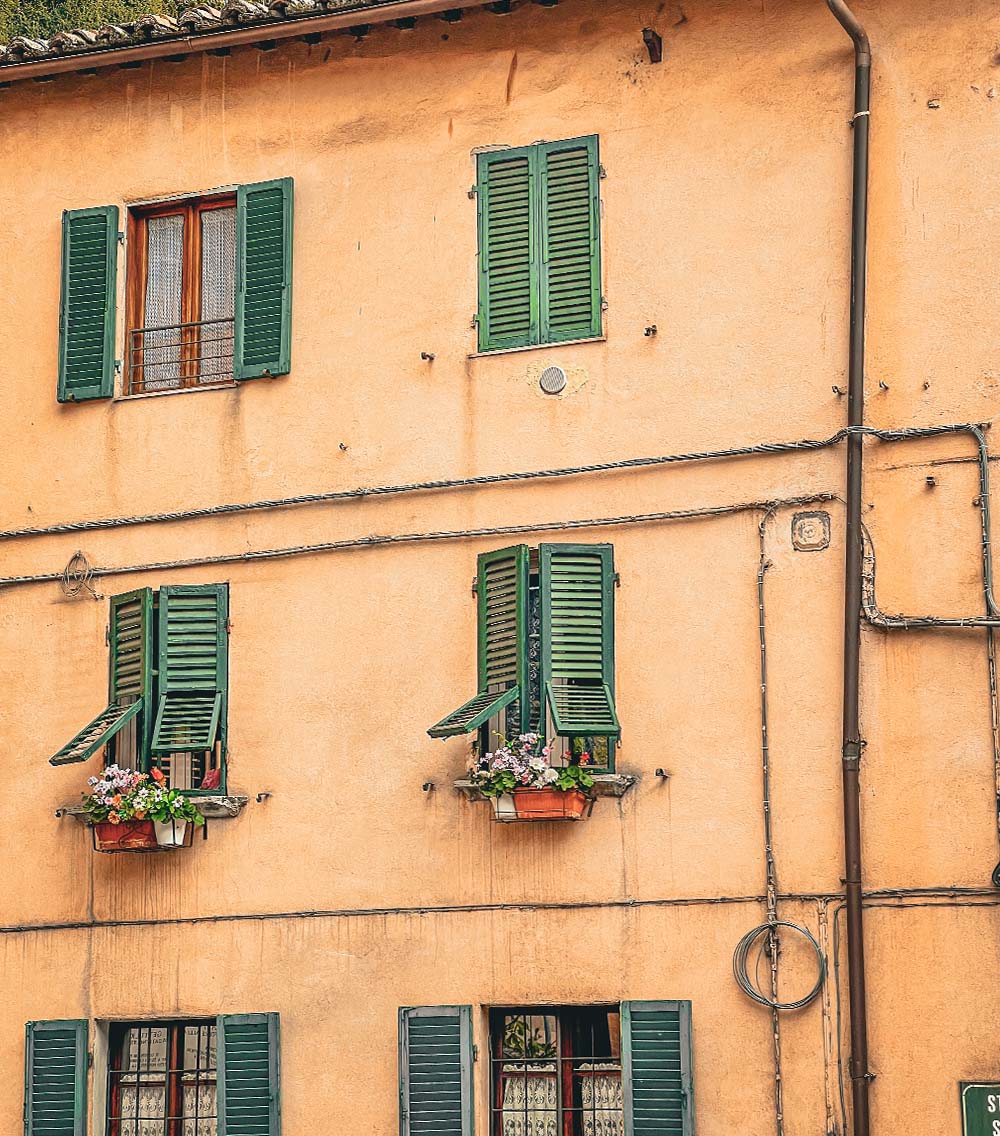
Yes, Perugia is a very walkable city, especially the historic center. The charming streets and hidden piazzas are pedestrian-friendly, making it perfect for exploring at your own pace. While some areas have hills, the central zone is relatively flat and easy to navigate on foot. This walkability is a big part of Perugia’s charm, allowing you to soak up the atmosphere and discover hidden gems as you wander.
Perugia is a foodie paradise known for its rich Umbrian cuisine. Savor delicacies like truffles, handmade pasta (especially umbricelli!), cured meats, and of course, their iconic Baci chocolates!



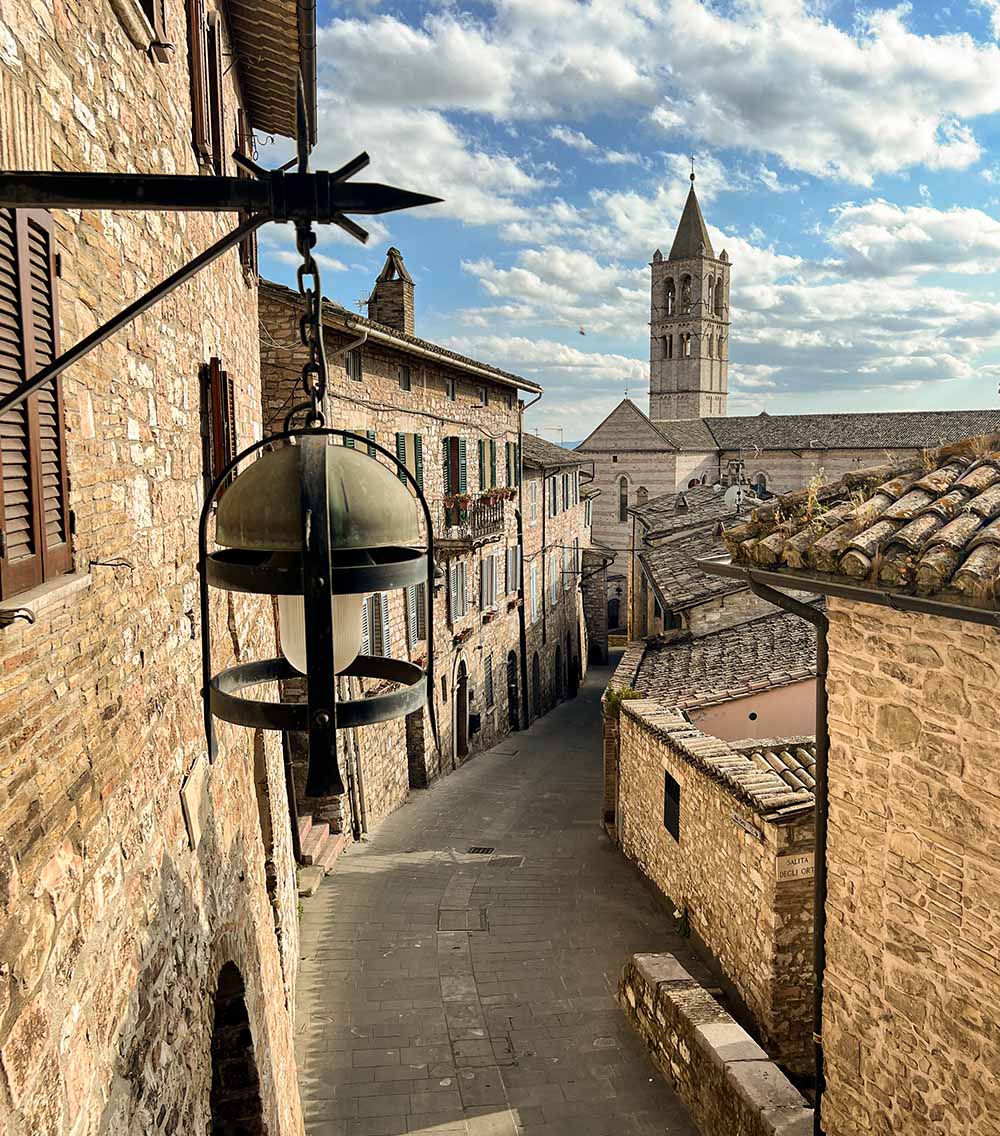


No Comments